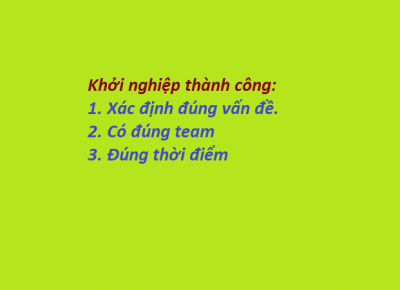The New Entrepreneurship School Curriculum
So what does the Durant School of Entrepreneurship, or E-School, curriculum look like? I’m currently trying to reshape our existing entrepreneurship curriculum from the traditional model to the new science of entrepreneurship I see emerging. Below is the high level flow of entrepreneurs, both in the school and I would argue in real life.
Reframe the Idea
Most students struggle to “dream up” a good idea. What they really need is to learn to see the world in a new way. In this phase, we help students break the frame on the world view. The focus of idea generation is to 1) learn to see all kinds of problems around you, 2) learn to see every problem as an opportunity, 3) develop the habit of creatively imagining multiple solutions to these problems (specifically, rather than coming up with and stopping with the first idea, develop the creative discipline to develop and churn through multiple solutions).
At the heart of it students need to develop the capacity to see the world in new ways, connect solutions to those observations, and do it in a disciplined way that pushes the boundaries. Great problems and solutions rarely emerge on the first try and so students need to develop the mental habit of developing and testing multiple ideas. In addition many tactics and tools of creative entrepreneurship can be applied to creatively identify, apply, and validate potential solutions.
Discover the Business Model
Business models are not business plans. A business model process is a disciplined method to uncover all the assumptions entrepreneurs are making about their potential business and then get into the field to rapidly test those ideas using inexpensive prototypes. This stage applies the new science of entrepreneurship (see Lean Startup, Customer Development, Nail It then Scale It) to deeply understand customer needs, the solution to those needs, and how to communicate with those customers. It stage characterized short cycles to capture validated learning and a willingness to pivot in order to discover the right opportunity. In this phase students are taught the skills and mentored through the process of business model discovery and validation.
The Business Plan ???
I’ll be honest with you, I’m becoming increasingly suspicious of business plans. I don’t think BPs are bad in themselves but they anchor us to a set of habits that are hard to kick—both because we are used to them and because they are easier than the hard work of getting outside the building. A business plan rewards planning and gathering numbers and creating a convincing story. In the end, they can easily convince you that you are on the right track when you aren’t. While I recognize writing a business plan is a skill, part of me is starting to believe that a validated business model would be all that the entrepreneur really needs to go to the next stage of operation or raise capital if needed. If a business plan really is necessary, then I would advocate for a lean startup approach that is scrappy, stays lean, and continues to develop the customer while recognizing the dangers of scaling early. The other part of me recognizes that a business plan can add value, both in thinking through the future. For example, once you have validated your critical assumptions (like for example, will customers even pay money for what you are offering) then modeling the sensitivity of revenue and expenses can be a very revealing experience. However, even given these benefits, I think a business plan needs to come at the right time—only after validating the critical assumptions rapidly in the field. Or another perspective may be that the more known the territory, the more valuable the plan; the more unknown the problem, the more valuable extensive testing before the plan.
Developing Critical Entrepreneurial Skills
As the business begins to develop, entrepreneurs need a new set of skills, including how to recruit a team, how to develop a repeatable sales model, and how to raise money when the time is right. Sound easy? Think again. As an example, how do you recruit A+ players to a no-name startup with six months of runway? And if you hire the superstar sales leader from Microsoft, you might be surprised to find they are exactly the wrong person to hire. My own student at Stanford discovered this one summer working for his own startup. Even though his startup was funded by one of the world’s top venture capital firms, he still struggled to find and hire the right people. Today I teach about his story every year at Stanford, with my student, using a case we wrote together. Similarly, although you may believe you know the basics of raising money, you might be surprised by the tactics employed by successful entrepreneurs. In short, while educators have done many good things in management and entrepreneurship education, there is a need to do more in teaching these critical entrepreneurial skills, most importantly, the rarely discussed topic of scaling a business. In this final phase, students develop the skills and resources to begin scaling their business at the right time.
In future posts I hope to highlight examples of classes, activities, and thought leaders at business schools who are transforming how we think about being an entrepreneur. My hope is that for you innovators, managers, entrepreneurs, and educators this helps create a contrast that helps you to recognize some important differences. Then I can share more about the hands-on tactics entrepreneurs use to validate their businesses and the results of the Lean Startup research project.
Resources: What I Wish I Knew When I Was 20 (Tina Seeling); Innovator’s DNA (Jeff Dyer); Design Thinking (many resources available)
Resources: Four Steps to the Epiphany (Steve Blank); Lean Startup (Eric Ries); Nail It then Scale It (Nathan Furr); Business Model Generation (Alex Osterwalder)









